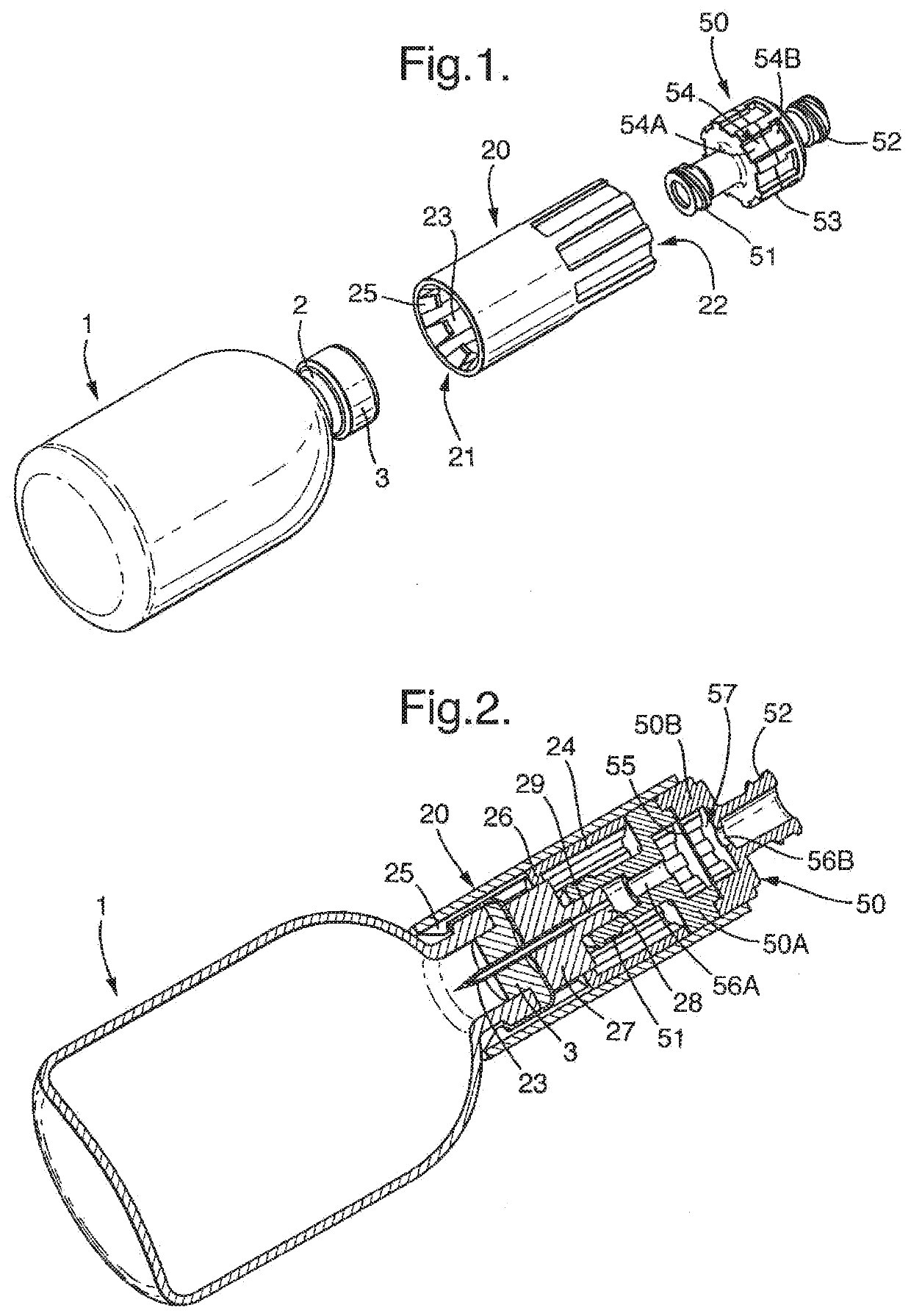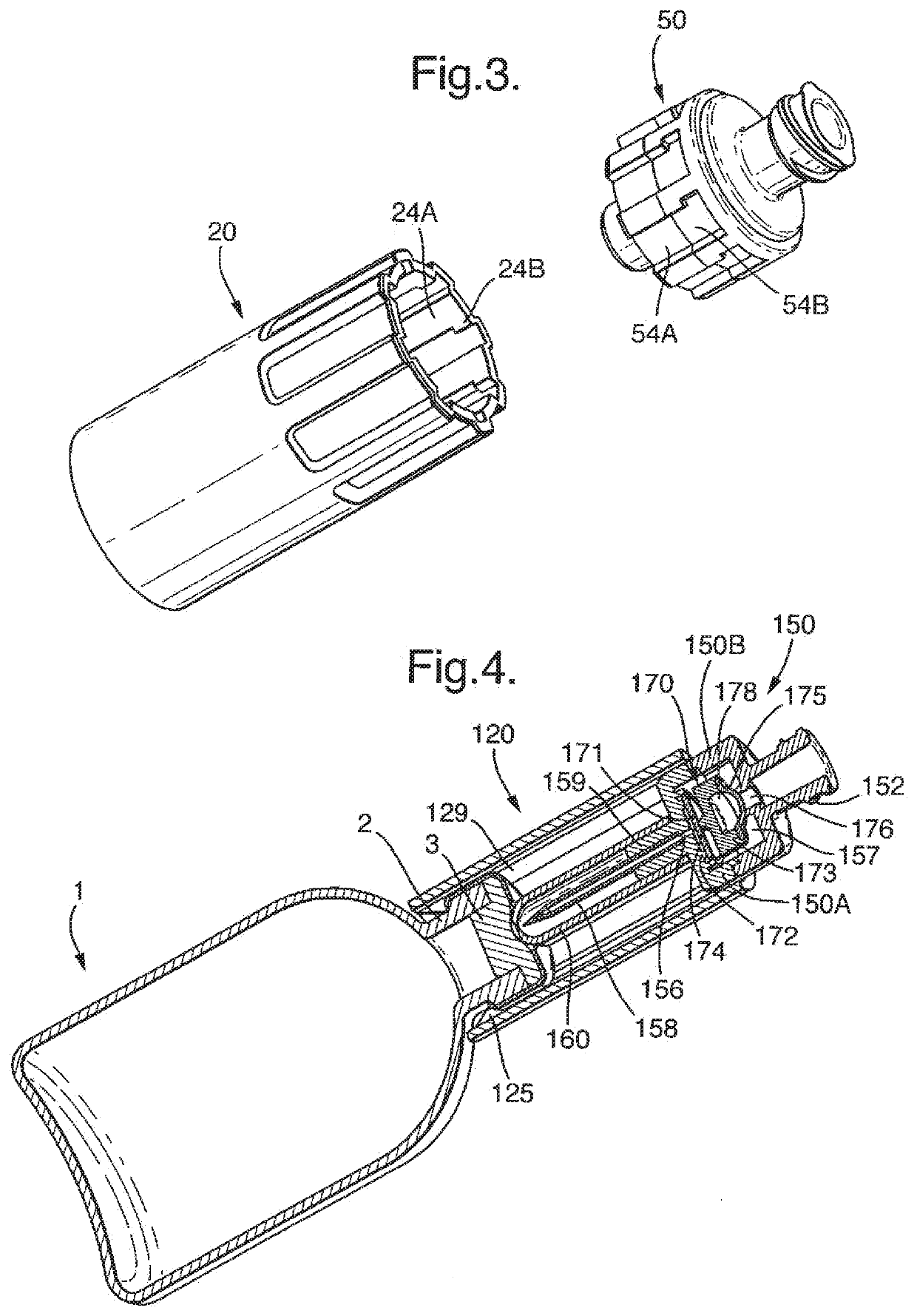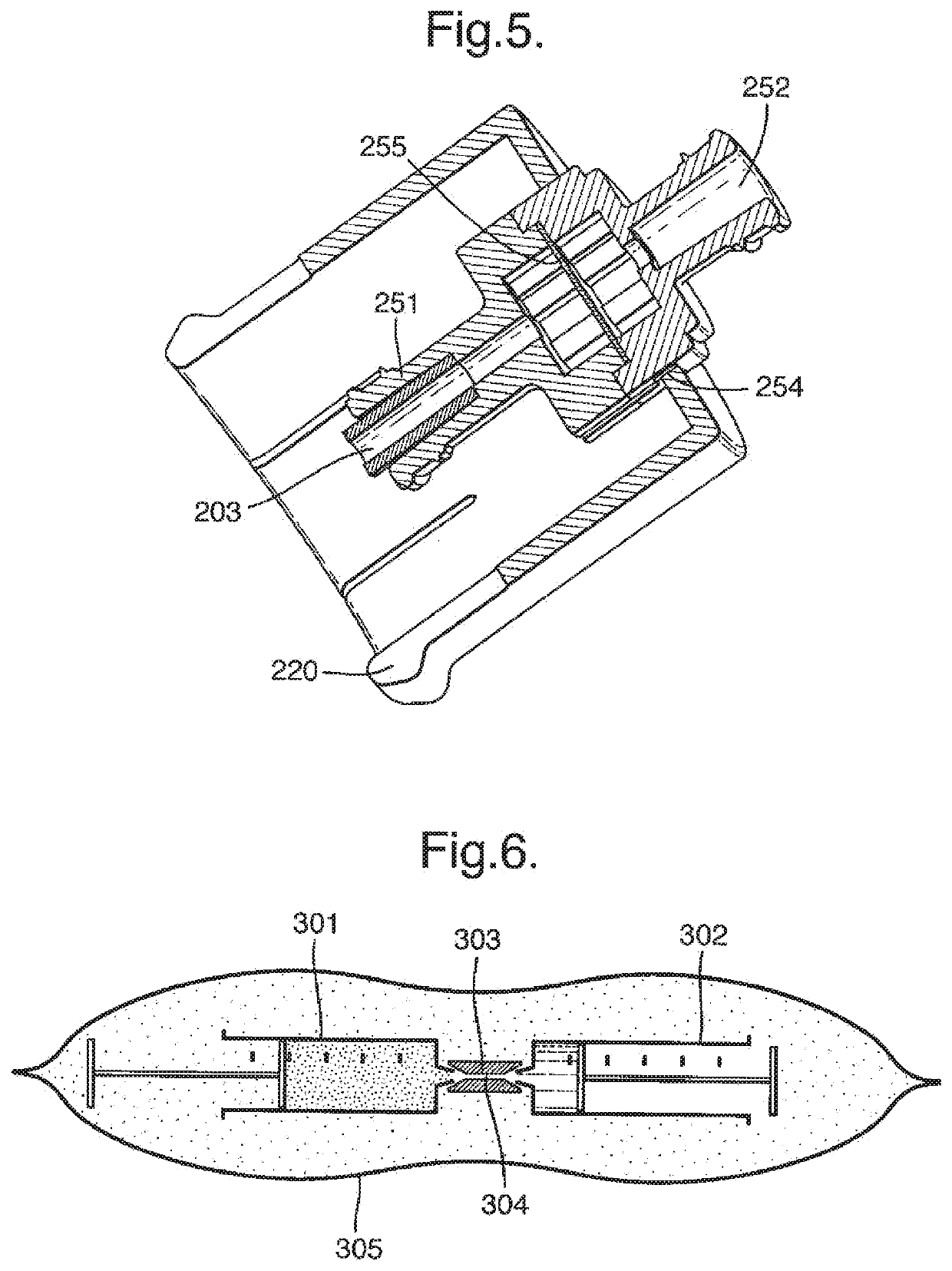Preparation of therapeutic foam
a technology of foam and foam injection, which is applied in the field of preparation of therapeutic foam, can solve the problems of affecting the quality of the foam, the difficulty of a physician wishing to fill the syringe exclusively with a gas other than air, and the potential danger of injecting air into the body. , to achieve the effect of simple operation, good quality and less cos
- Summary
- Abstract
- Description
- Claims
- Application Information
AI Technical Summary
Benefits of technology
Problems solved by technology
Method used
Image
Examples
first embodiment
[0072]1% polidocanol solution is used in the first embodiment, but it will be appreciated by those of ordinary skill in this art that there are a number of sclerosing agents which is perform well in the treatment of varicose veins. The most common alternative to polidocanol is sodium tetradecyl sulphate.
[0073]In further modifications of the first embodiment, the carbon dioxide gas could be replaced with another appropriate gas which is dissolved in or absorbed by blood or is harmlessly absorbed by the body in some other way. Examples include oxygen, nitrous oxide, helium, neon, xenon. Carbon dioxide, oxygen or a mixture of the two are preferred. Oxygen, although not very soluble, is taken up rapidly by haemoglobin in venous blood and is therefore suitable for use in a foam for injection into varicose veins. Because of its insolubility in water, foams made with oxygen last longer than foams made with carbon dioxide and it is easier to make a fine bubble microfoam with oxygen or anoth...
second embodiment
[0080]The second embodiment is designed to be used with a “double piston” type syringe which will be described below. Once such a syringe is charged with gas and liquid, a second plunger in the syringe is oscillated to make foam; all that is required is that the nozzle of the syringe be sealed.
[0081]A vial 1 is provided having exactly the same features as that of the first embodiment. A transfer device 120 is shown mounted on the vial. The transfer device is of overall cylindrical shape and is attached to the vial 1 by means of barbed attachment formations 125 which engage the neck region 2 of the vial 1, as for the first embodiment. The reminder of the transfer device, however, is different from the first embodiment and comprises simply a series of axial grooves 129 in the interior wall.
[0082]A syringe connector device 150 is received in the transfer device 120. The syringe connector device 150 is formed with axial lands (not shown) complementary to the grooves 129 of the transfer ...
fifth embodiment
[0098]the invention is illustrated schematically in FIG. 6. Two 20 ml syringes 301, 302 are supplied, connected together by means of a standard syringe connector 303 having a bore 304 of cross section approximately 1 mm. The first syringe 301 contains 8 ml of substantially pure carbon dioxide whilst the second contains 2 ml of 1% polidocanol solution. The syringes are enclosed in a pouch 305 of metallised plastics laminate, in an atmosphere of substantially pure carbon dioxide at a pressure of 1.1 bar absolute (i.e. 0.1 bar over atmospheric).
[0099]To use the fifth embodiment, the user simply breaks open the package and pumps the syringes to produce foam (either manually or using a machine as described above).
[0100]In a modified version of the fifth embodiment, the twin syringes are replaced with a double plunger syringe of the type described above, charged with the same quantities of carbon dioxide and 1% polidocanol solution.
[0101]The syringes are pre-filled with appropriate volume...
PUM
| Property | Measurement | Unit |
|---|---|---|
| thickness | aaaaa | aaaaa |
| thickness | aaaaa | aaaaa |
| pressure | aaaaa | aaaaa |
Abstract
Description
Claims
Application Information
 Login to View More
Login to View More - R&D
- Intellectual Property
- Life Sciences
- Materials
- Tech Scout
- Unparalleled Data Quality
- Higher Quality Content
- 60% Fewer Hallucinations
Browse by: Latest US Patents, China's latest patents, Technical Efficacy Thesaurus, Application Domain, Technology Topic, Popular Technical Reports.
© 2025 PatSnap. All rights reserved.Legal|Privacy policy|Modern Slavery Act Transparency Statement|Sitemap|About US| Contact US: help@patsnap.com



